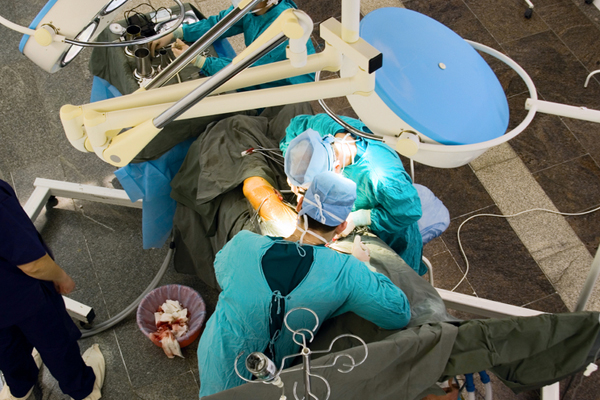4-Year-Old's Out-of-Body Experience: Religion or Science?

Several years ago, when Colton Burpo was 4 years old, he underwent cardiac arrest and was resuscitated during emergency surgery for a ruptured appendix. Four months later, Colton started saying strange things to his father, a Nebraskan pastor named Todd, and his mother, Sonja, about his near-death experience (NDE).
Colton recounted rising up out of the operating room, looking down on the doctors and his praying parents from above, and floating away to heaven , where he met his dead grandfather, his unborn sister who had died in a miscarriage, Jesus and God. In the New York Times bestseller "Heaven is for Real" (Thomas Nelson 2010), Todd Burpo tells the story of his son's trip to heaven and back.
Judging by book sales, this young boy's out-of-body experience in the operating room has given a great deal of encouragement to many people's religious beliefs. But what about those who don't believe in the Christian idea of heaven, but who also don't feel comfortable calling a 4-year-old a liar? Is there a scientific explanation for what happened to Colton?
Recent research seems to show that there is.
Several studies, such as a study by Slovenian researchers published in the journal Critical Care last year, have found that NDEs are quite common. Around 20 percent of heart attack survivors report events such as moving toward a bright light, feelings of peace and joy, or profound spiritual experiences.
According to the study, that subset of patients also had elevated levels of carbon dioxide in their blood compared with patients who did not have NDEs, a condition that causes anoxia, or oxygen deprivation in the brain.
Anoxia, in turn, causes euphoria, visions of light tunnels, hallucinations and other typical symptoms of NDEs. In other words, anoxia is likely what causes the phenomena.
Get the world’s most fascinating discoveries delivered straight to your inbox.
That may not be the end of the story, however.
A research collaboration called AWARE (AWAreness during REsuscitation), led by Sam Parnias at the University of Southampton in the U.K., is studying NDEs and out-of-body experiences in the hope of learning more about consciousness and the relationship between the mind and the brain. In 2009, Parnias told the press, "At least 10 to 20 percent of people who have been brought back to life will tell us they had consciousness present, and a proportion of them will tell us they were able to see doctors and nurses working on them as if they're looking from above.
"When people have died, their brain goes into a flatline state, so consciousness shouldn't be present. But it could also be that [doctors] did something amazing to get blood into their brains.
Parnias is also testing the possibility that the mind really does momentarily separate from the brain during death. He has initiated the placement of boards with symbols on them in intensive care units in 21 hospitals worldwide. The symbols are unobservable to people in hospital beds, but they are visible to observers looking down from above. Over the next three years, Parnias and his colleagues will collect data on whether or not patients who have out-of-body experiences report seeing the symbols.
The researchers hope to provide a definitive answer to the question of whether out-of-body phenomena are real, or merely hallucinations arising in oxygen-deprived brains.
Got a question? Send us an emailThis e-mail address is being protected from spambots. You need JavaScript enabled to view it and we'll crack itThis e-mail address is being protected from spambots. You need JavaScript enabled to view it . Follow Natalie Wolchover on Twitter @nattyover
Natalie Wolchover was a staff writer for Live Science from 2010 to 2012 and is currently a senior physics writer and editor for Quanta Magazine. She holds a bachelor's degree in physics from Tufts University and has studied physics at the University of California, Berkeley. Along with the staff of Quanta, Wolchover won the 2022 Pulitzer Prize for explanatory writing for her work on the building of the James Webb Space Telescope. Her work has also appeared in the The Best American Science and Nature Writing and The Best Writing on Mathematics, Nature, The New Yorker and Popular Science. She was the 2016 winner of the Evert Clark/Seth Payne Award, an annual prize for young science journalists, as well as the winner of the 2017 Science Communication Award for the American Institute of Physics.



